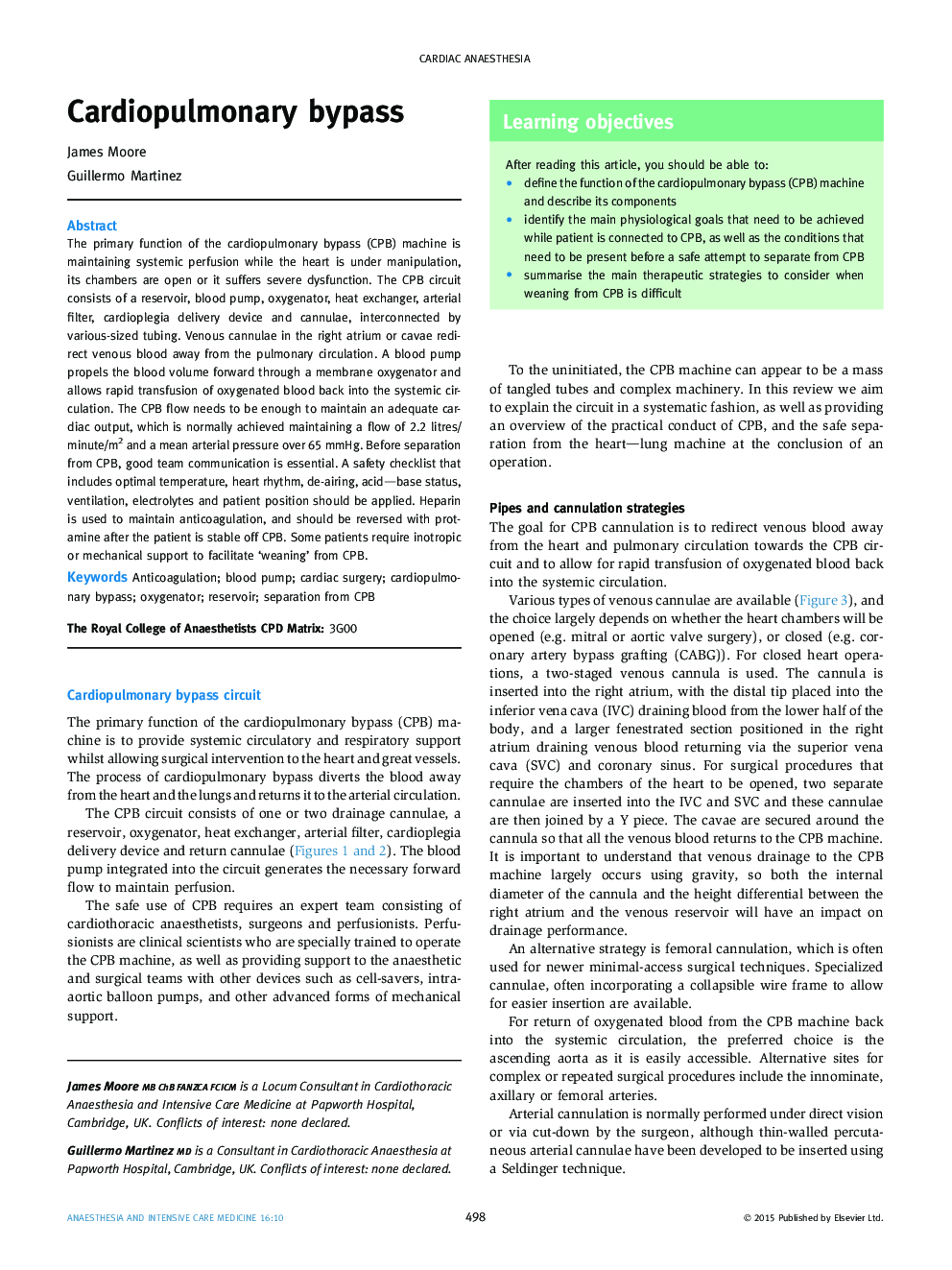| Article ID | Journal | Published Year | Pages | File Type |
|---|---|---|---|---|
| 2742151 | Anaesthesia & Intensive Care Medicine | 2015 | 6 Pages |
The primary function of the cardiopulmonary bypass (CPB) machine is maintaining systemic perfusion while the heart is under manipulation, its chambers are open or it suffers severe dysfunction. The CPB circuit consists of a reservoir, blood pump, oxygenator, heat exchanger, arterial filter, cardioplegia delivery device and cannulae, interconnected by various-sized tubing. Venous cannulae in the right atrium or cavae redirect venous blood away from the pulmonary circulation. A blood pump propels the blood volume forward through a membrane oxygenator and allows rapid transfusion of oxygenated blood back into the systemic circulation. The CPB flow needs to be enough to maintain an adequate cardiac output, which is normally achieved maintaining a flow of 2.2 litres/minute/m2 and a mean arterial pressure over 65 mmHg. Before separation from CPB, good team communication is essential. A safety checklist that includes optimal temperature, heart rhythm, de-airing, acid—base status, ventilation, electrolytes and patient position should be applied. Heparin is used to maintain anticoagulation, and should be reversed with protamine after the patient is stable off CPB. Some patients require inotropic or mechanical support to facilitate ‘weaning’ from CPB.
